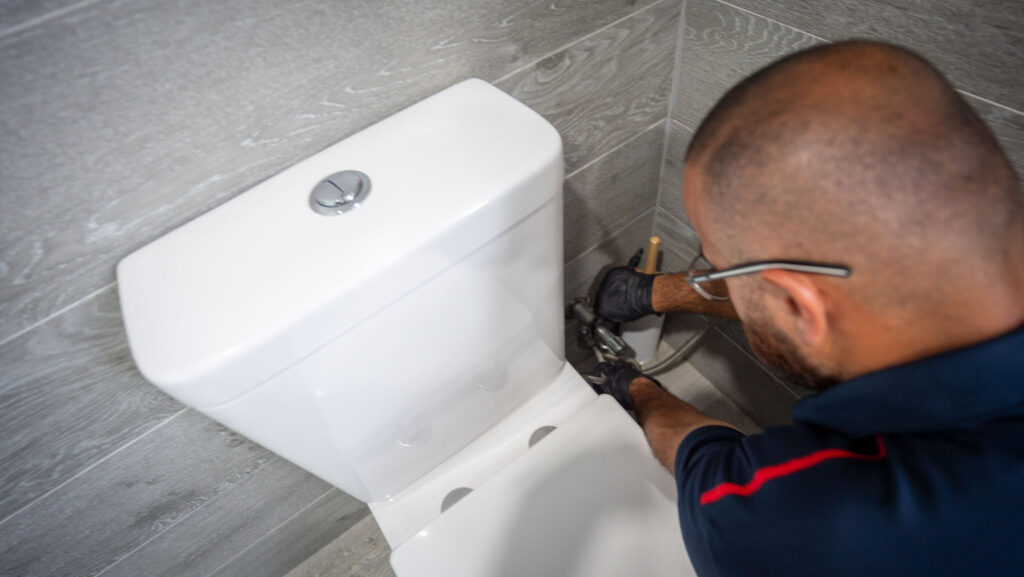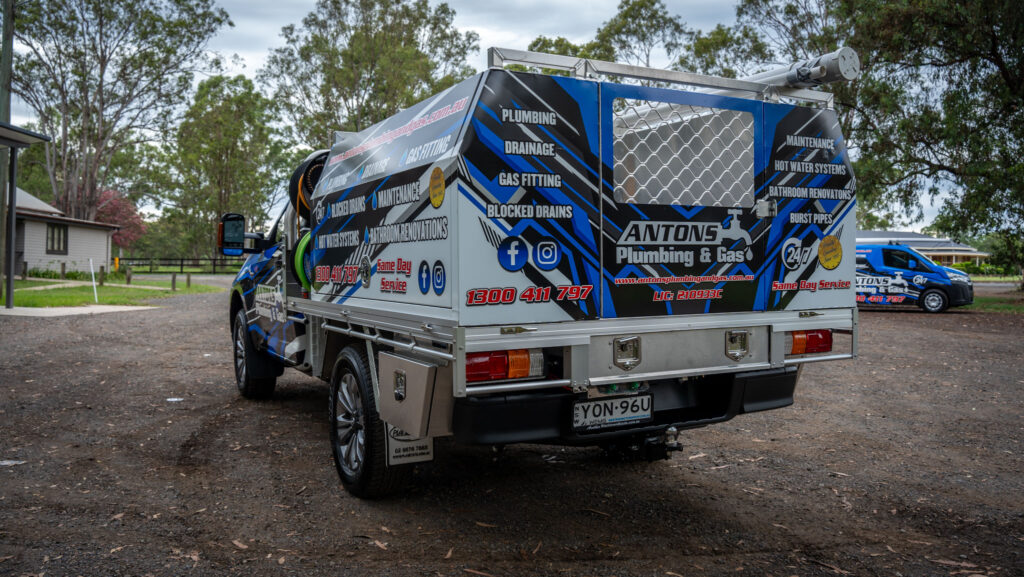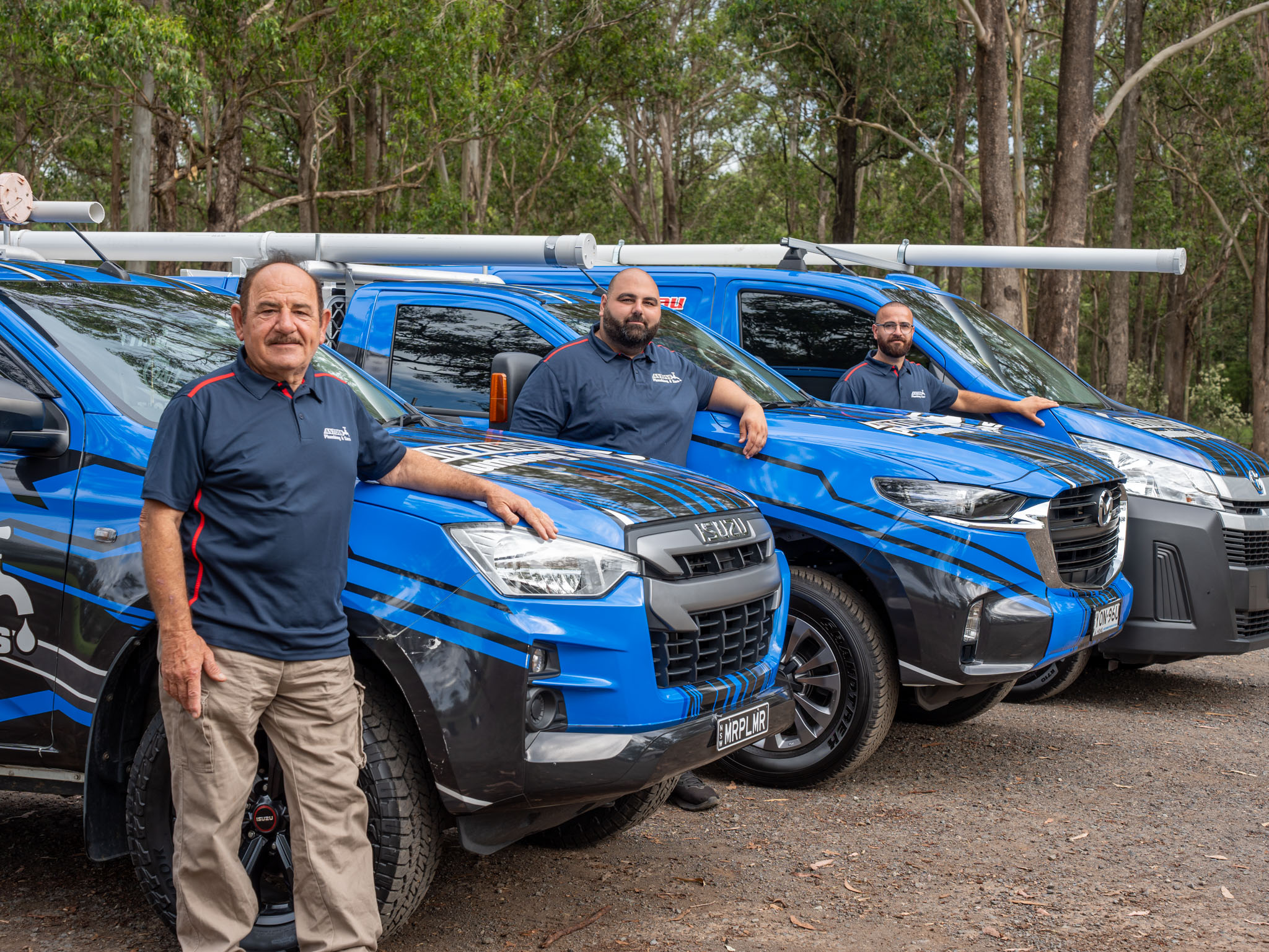Water damage from undetected leaks can destroy your property within hours, causing structural damage, mould growth, and thousands in repair costs. Fast leak identification and proper isolation prevent catastrophic damage by stopping water flow at the source and containing affected areas before moisture spreads through walls, floors, and foundations.
This guide covers essential leak detection methods, isolation techniques, and damage prevention strategies specifically for Western Sydney properties. You’ll learn how to locate your main water valve, understand different leak types, and discover professional detection methods that save time and money.
Key Takeaways
- Quick leak isolation using your main water valve prevents extensive structural damage and mould formation.
- Pressurised line leaks, fixture leaks, and stormwater issues require different detection approaches and repair methods.
- Thermal imaging and acoustic detection locate hidden leaks without destructive excavation or wall removal.
- Professional containment and documentation protect your insurance claims and property value.
- Licensed plumbers in Western Sydney provide same-day emergency response for leak detection and isolation services.
Understanding Leak Types in Western Sydney Properties

Different leak sources require specific detection methods and repair approaches. Pressurised water lines create the most urgent situations, while fixture leaks often develop slowly over months. Stormwater and roof drainage issues can mimic plumbing leaks, making accurate diagnosis essential for effective repairs.
Western Sydney’s aging infrastructure and clay soil conditions create unique challenges for leak detection. Tree roots commonly infiltrate older pipes, while ground movement affects joint integrity in both domestic and commercial properties.
| Valve Type | Location | Operation | Access Requirements |
|---|---|---|---|
| Street-side meter valve | Near water meter | Quarter-turn or wheel handle | May require water authority tool |
| Property boundary valve | Front fence area | Hand-operated lever | Property owner access |
| Internal isolation valve | Garage or utility room | Wheel or lever handle | No special tools needed |
| Zone-specific valves | Near fixtures or equipment | Small wheel or lever | Standard access |
Pressurised Water Line Leaks
Main water lines and internal supply pipes operate under constant pressure, causing rapid water loss when damaged. These leaks often occur at pipe joints, beneath concrete slabs, or where pipes pass through walls. You might notice sudden pressure drops, unexplained water bills, or wet spots on floors and walls.
Fixture and Appliance Leaks
Taps, toilets, washing machines, and hot water systems develop leaks through worn seals, loose connections, or component failure. While less dramatic than burst pipes, these leaks waste significant water and create ideal conditions for mould growth behind cabinetry and within wall cavities.
Roof and Stormwater Drainage Issues
Blocked gutters, damaged roof tiles, and faulty stormwater pipes can direct water into your property’s structure. These issues often surface during heavy rainfall periods common in Western Sydney, causing water stains, ceiling damage, and foundation problems that require immediate attention.
Underground Service Line Problems
Water and sewer lines beneath your property can develop leaks from ground movement, tree root intrusion, or pipe deterioration. These hidden leaks often go undetected for months, causing soil erosion, foundation settling, and contamination issues that affect neighbouring properties.
Our team at Antons Plumbing & Gas uses specialised equipment to identify leak sources quickly and accurately. We provide same-day response across Western Sydney, helping you avoid extensive water damage through prompt isolation and professional repairs.
Finding and Using Your Main Water Isolation Valve
Your main water isolation valve controls water flow to your entire property and serves as your first line of defence against leak damage. Knowing its location and operation can save thousands in water damage before professional help arrives. Most Western Sydney properties have valves located near the front boundary, water meter, or where the main line enters your building.
1. Boundary and Street-Side Locations
Check near your water meter, usually within 1-2 metres of your front fence or driveway. The valve may be in a covered pit or attached to the meter assembly itself.
2. Property Entry Points
Look where the main water line enters your building, often near the front wall or garage area. The valve should be accessible without tools and clearly marked for emergency use.
3. Internal Isolation Valves
Many properties have secondary valves inside garages, basements, or utility rooms. These provide convenient access during emergencies without accessing street-side equipment in poor weather conditions.
4. Multi-Story and Commercial Buildings
Commercial properties typically have floor-specific isolation valves plus a main building valve. Know your building’s valve locations and keep access keys readily available for emergency situations.
5. Operation and Testing Tips
Turn valves slowly to avoid water hammer damage to your pipes. Test your valves annually by partially closing and reopening to ensure they operate smoothly when needed most.
Commercial properties often have multiple isolation points for different zones or floors. Strata buildings typically maintain master valves for common areas plus individual unit isolation valves for maintenance and emergency situations.
Non-Invasive Leak Detection Methods for Western Sydney
Modern leak detection eliminates guesswork and destructive excavation through advanced technology. Acoustic listening devices, thermal imaging cameras, and tracer dyes locate leaks precisely without damaging walls, floors, or landscaping. These methods save time and money while providing accurate diagnosis for targeted repairs.
Professional detection equipment identifies leaks that remain invisible to standard inspection methods. This technology proves especially valuable in Western Sydney’s diverse property types, from heritage homes to modern commercial complexes.
Acoustic Leak Detection Technology
Sensitive microphones and ground listening devices detect the sound of water escaping from pressurised pipes. This method works effectively on concrete slabs, underground services, and within wall cavities where visual inspection proves impossible.
Thermal Imaging Leak Detection
Infrared cameras reveal temperature variations caused by water movement and evaporation. Thermal imaging leak detection identifies moisture patterns behind tiles, within walls, and beneath floors without invasive investigation or surface damage.
Tracer Dye Testing Methods
Food-grade dyes introduced into plumbing systems reveal leak paths and contamination sources. This method proves particularly effective for toilet leaks, pool equipment, and complex drainage systems where water flow patterns remain unclear.
Electronic Pipe Location Services
Electromagnetic detection equipment maps underground pipe routes and identifies potential problem areas. This technology prevents accidental damage during excavation and helps target leak detection efforts in large commercial properties.
CCTV Drain Inspection Capabilities
Waterproof cameras inserted into drainage systems provide real-time video of pipe conditions, blockages, and structural damage. CCTV inspection identifies root intrusion, pipe collapse, and joint separation without excavation or property disruption.
Our qualified technicians combine multiple detection methods to locate leaks quickly and accurately. We provide detailed reports with photographic evidence and repair recommendations for insurance documentation and future reference.
Water Damage Prevention Playbook for Plumber Western Sydney Visits
Professional leak detection visits require systematic damage prevention protocols to protect your property and belongings. Proper containment, moisture extraction, and documentation prevent secondary damage while preserving evidence for insurance claims. Quick response combined with professional techniques minimises repair costs and restoration timeframes.
1. Immediate Water Source Isolation
Turn off main water supply and electrical power to affected areas before beginning containment efforts. Document water meter readings and photograph visible damage for insurance documentation purposes.
2. Emergency Water Extraction
Remove standing water using pumps, wet vacuums, or absorbent materials depending on volume and location. Focus on preventing water spread to unaffected areas through doorway barriers and strategic placement of extraction equipment.
3. Moisture Detection and Mapping
Use moisture meters to identify affected materials and hidden water damage within walls, floors, and ceiling spaces. Create detailed moisture maps for insurance adjusters and restoration contractors.
4. Structural Drying and Ventilation
Position fans, dehumidifiers, and ventilation equipment to accelerate drying and prevent mould formation. Monitor humidity levels and adjust equipment placement based on moisture readings and environmental conditions.
5. Contamination Assessment and Safety
Evaluate water source cleanliness and implement appropriate safety measures for contaminated water exposure. Category 2 and 3 water sources require specialised handling and disposal procedures.
6. Insurance Documentation Process
Photograph all damage before cleanup begins, maintain detailed records of affected materials, and preserve samples if contamination is suspected. Coordinate with insurance representatives and restoration contractors.
7. Repair Planning and Coordination
Develop comprehensive repair strategies that address both immediate damage and underlying causes. Schedule follow-up inspections to ensure complete moisture removal and prevent future problems.
Our damage prevention approach focuses on immediate containment followed by thorough moisture removal and environmental monitoring. This systematic process prevents mold growth and structural damage that can develop within 24-48 hours of water exposure.
Antons Plumbing & Gas: Western Sydney Leak Detection and Remedial Repairs

We specialise in comprehensive leak detection, isolation, and damage prevention services throughout Western Sydney’s residential and commercial properties. Our licensed technicians respond within hours to emergency calls, using advanced detection equipment to locate leaks quickly and minimise property damage. Every job includes detailed documentation, clear repair options, and upfront pricing with no hidden fees.
Our 25+ years of experience in Western Sydney’s unique conditions means we understand local infrastructure challenges, from aging clay pipes to ground movement issues. We provide same-day service across the region, backed by full licensing (Lic: 210933C) and comprehensive insurance coverage.
Call 1300 411 797 for immediate leak detection and isolation services across Western Sydney. Our team provides transparent pricing, professional workmanship, and lifetime labour warranties on all repair work.
Conclusion
Fast leak identification and proper isolation prevent thousands in water damage and structural repairs. Professional detection methods locate problems accurately while non-invasive techniques preserve your property’s integrity. Expert damage prevention protocols ensure complete restoration and long-term protection against future leaks.
Antons Plumbing & Gas protects Western Sydney homes with professional leak detection services backed by 25+ years experience. Our licensed team isolates problems fast, preventing costly water damage. Learn more about our same-day service today.
FAQs
How Do I Find And Turn Off The Main Water Isolation Valve In A Western Sydney Home?
To find the main water isolation valve in your home, look for a valve located near the water meter, typically found near the front of the property or underground. It may be a round or lever-type valve. To turn it off, rotate the valve clockwise until it stops. If you’re unsure or need assistance, our licensed plumbers at Antons Plumbing & Gas can help you identify and operate your isolation valve safely.
What Are The Signs Of A Hidden Wall/Slab Leak Vs Condensation?
Signs of a hidden wall or slab leak may include unexplained water stains, a sudden increase in your water bill, dampness on walls or floors, and mold growth. In contrast, condensation typically appears as surface moisture on windows and walls, especially in humid conditions. If you suspect a leak, our experienced team can conduct thorough leak detection to accurately diagnose the issue and provide you with reliable solutions.
Do Plumbers Use Thermal Imaging Or Acoustic Detection For Leaks—And When?
Yes, plumbers often use thermal imaging and acoustic detection to locate leaks. Thermal imaging helps identify temperature differences that may indicate a leak, while acoustic detection listens for the sound of water escaping through pipes. These methods are particularly useful for hidden leaks, allowing for non-invasive diagnostics and efficient repairs. At Antons Plumbing & Gas, we utilize advanced technology to ensure precise leak detection and minimize disruption to your home.
Who Should I Call First For A Burst Pipe After Hours In Western Sydney?
If you experience a burst pipe after hours, you should call a licensed plumber immediately. At Antons Plumbing & Gas, we offer 24/7 emergency response services, ensuring prompt assistance to prevent further damage to your property. Our qualified team is ready to tackle urgent plumbing issues, so you can have peace of mind during stressful situations.
Does Home Insurance Typically Cover Water Damage From Plumbing Leaks?
Home insurance policies often cover water damage from plumbing leaks, but this can vary depending on your specific policy and the circumstances of the leak. It’s best to review your policy or consult with your insurance provider for details. If you need help identifying and repairing leaks to prevent damage, our skilled plumbers are here to assist you with effective solutions and expert




